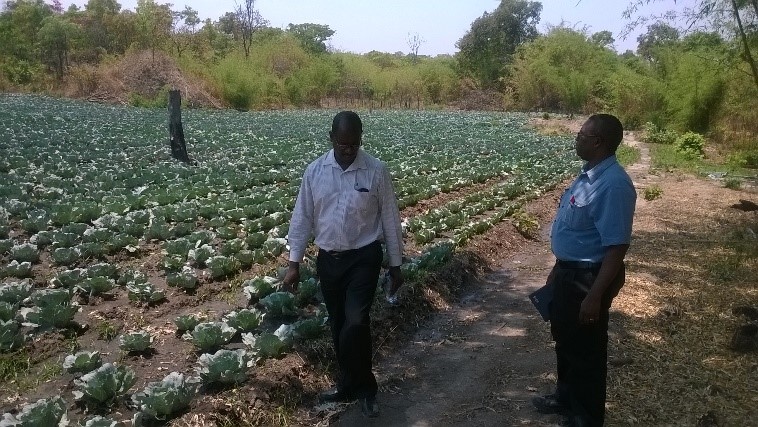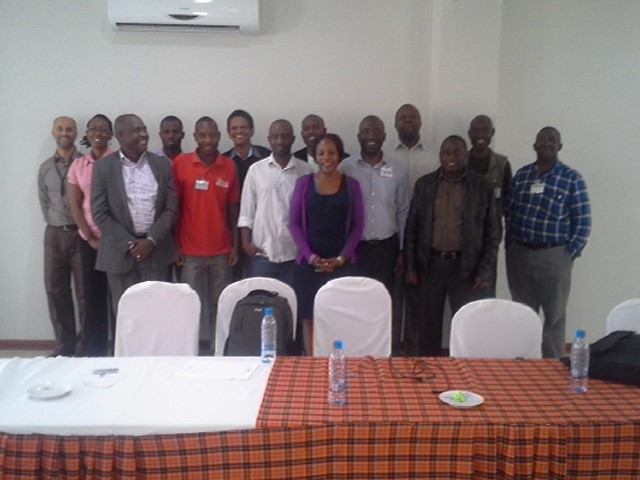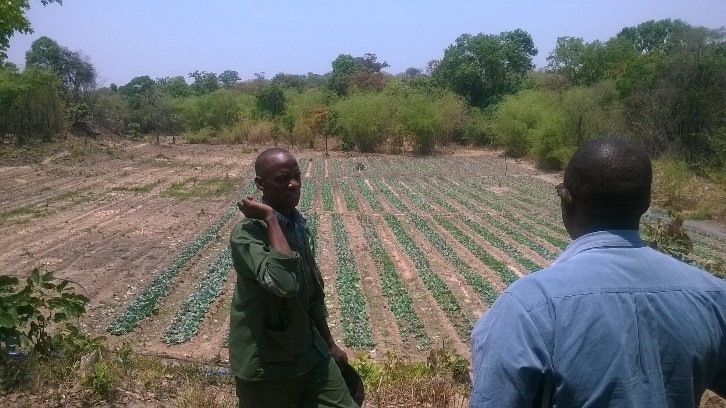Fresh Fruit and Vegetable Supply Value Chain in Zambia
The horticultural sector is poised to be one of the most successful sectors within the agricultural industry in Zambia but smallholder farmers are hindered by limited access to markets, finance, farm inputs and a lack of knowledge. A reliance on traditional and inefficient farming methods, unsuitable fertilizers and minimal farm machinery mean that yields are limited and livelihoods insecure. These difficulties are compounded by a lack of infrastructure.

Freshmark (Z) Ltd is a subsidiary of the Shoprite chain of stores under the Africa Supermarkets brand. Most of the chain’s fresh produce is imported from South Africa, presenting logistical challenges, and it was keen to seek innovative ways to meet the growing demand for its fresh produce by engaging local stakeholders and smallholder farmer groups.
Freshmark and PEPZ, a local NGO, have been collaborators for some time, and in 2014 both partners saw an opportunity to work with a wider range of local stakeholders, in order to make a real difference to horticultural development, market access and livelihoods. They envisioned a wider, multi-stakeholder, cross-sectoral partnership that could facilitate infrastructure development and draw smallholder farmers into the Freshmark value chain by linking them to a new and guaranteed market for their produce.
This led to the development of the Consortium of Fresh Fruit & Vegetable Producers’ Partnership (FPP), which aims to train smallholder farmers in both agricultural best practices and entrepreneurial skills in order to transform them from small scale subsistence producers into profitable, commercial scale horticultural producers with secure livelihoods. The initiative will target 109 smallholder farmers who currently have a total turnover of USD 30,000 p.a. from their farming activities – estimates are that they could easily turnover USD 763,000 p.a. through this intervention.
In order to be both impactful and sustainable, this initiative required the engagement, and alignment, of a wide range of stakeholders - a challenge in itself, and to support them through this process, Freshmark and PEPZ turned to Zambia Business in Development Facility (ZBIDF), which provides a range of support to country-level cross-sector initiatives, including brokering. The partnership was developed to include: government actors to provide agricultural extension services, land and infrastructure support; 4 further NGOs (Musika, IDE, IDSP and AgBIT) to provide tech support and capacity building; Vision Fund Zambia to provide financial solutions to farmers; MFinance to insure the transaction; and Input suppliers (Starke Ayres, SARO, ATS, Zambian Fertilisers).
Reaching a clear set of shared objectives, in a partnership of this complexity, can be a lengthy and difficult, and necessarily iterative process. ZBIDF’s initial work with all the stakeholders brought to light 3 main barriers that needed to be overcome for the partnership to work:
- Trust: many of the sectors had not previously worked with one another. Some NGOs were suspicious of the private sector’s motives, whilst the farmers were concerned that their voices wouldn’t be heard or even be considered relevant in a partnership with so many larger players;
- A lack of common understanding as to why the partners needed to come together: why it made sense to take a partnership approach. The partners had well established individual goals yet some did not yet see the full value of engaging more broadly;
- An unrealistic expectation of the partnering process and timeframes: the farmers in particular expressed frustration at the amount of time it was taking to see results.

A key initial step in addressing these challenges, after conducting 1:1 interviews, was to run workshops bringing together as many of the stakeholders as possible, including a 2-day training for all stakeholders, on ‘Effective Partnerships for Development’. The training and workshops allowed partners to familiarise themselves with sectors they were previously unfamiliar with, develop working relationships, and begin to take steps to move the partnership forward, including producing an agreed list of objectives and resource commitments to lead to a partnering agreement.
Training all partners in the partnering process created a common understanding, allowing expectations to be adjusted and realistic timeframes established. The process demonstrated that it is always worth setting aside time to manage expectations, align objectives and cement relationships. In this case, bringing the stakeholders together for 2 intensive days of collaborative work allowed them to fully buy into the benefits of partnering, establishing key principles of trust, equity, transparency and mutual benefit. As a result, stakeholders were able to draft a partnering agreement more quickly and efficiently than they might have otherwise.

Other helpful strategies included a resource-mapping exercise which helped both in building trust and demonstrating the case for partnership. Partners pledged what resources they could commit in an open workshop, which demonstrated good faith, and illustrated the practical advantages to partnering. It also established quite clearly that each partner had a valuable role to play, regardless of size or financial capability. Transparency at this level set the tone for the partnership and enabled more honest and constructive conversations to happen, especially that it would create a win-win situation for the benefit of all.
Whether or not it is possible to bring partners together in this way, it is important to remember that clear communication is absolutely critical to any partnership’s success. Nothing must be taken for granted. No assumptions must be made, and clear and effective communication is essential.
For more information on the partnership, please see the case study.
This post is a part of the May 2016 series on Partnerships delivering inclusive businesses. View the whole series for more business examples, research and insights on partnering for impact.
